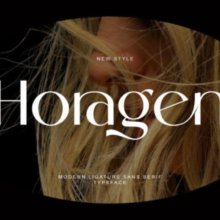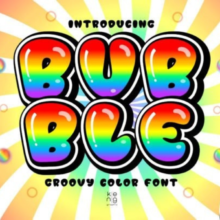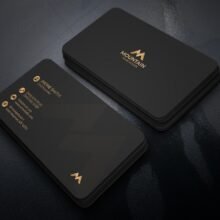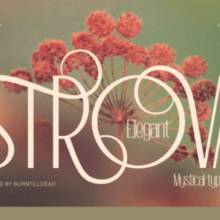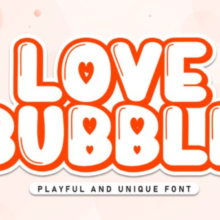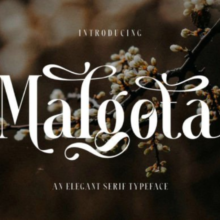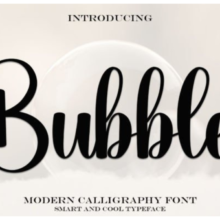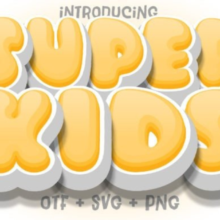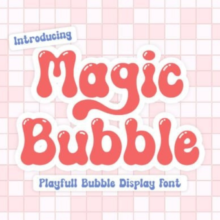Proxima Nova: The Typeface That Defined a Generation of Digital Design
Typography has always been at the heart of great design, but some typefaces go beyond just aesthetics—they shape an era. One such typeface is Proxima Nova, a geometric sans-serif font that has become synonymous with modern digital design. Developed by Mark Simonson in the early 2000s, Proxima Nova has grown from a niche typeface into a dominant force on the web, in branding, mobile apps, and editorial design.
A Brief History
Proxima Nova’s story begins in 1994 when Mark Simonson released a typeface called Proxima Sans. Though promising, it didn’t receive wide attention at the time. A few years later, recognizing the demand for a more versatile geometric sans-serif, Simonson decided to rework Proxima Sans. This resulted in Proxima Nova, which was released in 2005.
The name “Nova” means “new,” signaling that this was more than just a revision—it was a total overhaul. Kept the spirit of the original but introduced a more comprehensive set of weights and widths, improved legibility, and support for a broader range of languages and characters.
Design Characteristics
Proxima Nova strikes a perfect balance between geometric precision and humanist warmth. This balance is one of the primary reasons for its popularity. While it shares the clean, mathematical construction of fonts like Future, it avoids the cold sterility that can make purely geometric fonts difficult to read in long passages of text.
Here are some defining features of Proxima Nova:
-
Geometric Base: Built on basic geometric shapes like circles and squares, giving it a modern and clean appearance.
-
Humanist Touches: Slightly softer curves and variable stroke widths that enhance legibility and warmth.
-
Wide Range of Weights: Proxima Nova includes 16 fonts in total—8 weights (Thin to Black) with matching italics, offering tremendous versatility.
-
Rounded Terminals: Its rounded ends make it feel less mechanical and more approachable than older grotesque sans-serifs.
-
Tall x-height: This design choice improves readability, especially in small sizes or low-resolution displays.

Popularity and Usage
Since its release, Proxima Nova has seen meteoric adoption. It has become almost ubiquitous in digital design, earning a reputation as the “Helvetica of the web.” Its neutral yet friendly tone makes it suitable for a wide range of applications—from corporate branding to editorial content.
Web and Mobile Interfaces
Proxima Nova has been a staple for countless websites, apps, and digital platforms. The font’s clarity and legibility at different sizes make it ideal for user interfaces and responsive web design. Some notable companies and platforms that have used Proxima Nova include:
-
BuzzFeed – Helped define the brand’s viral and youthful look.
-
Mashable
-
TikTok (in parts of its branding and UI)
-
NBC News
-
Airbnb (used before switching to their custom Cereal font)
These brands chose Proxima Nova because it feels contemporary without being too trendy, clean without being stark, and legible without being boring.
More Read: Click Here
Editorial and Publishing
Because of its wide weight range and readability, Proxima Nova is a favorite in digital publishing and editorial layouts. Designers can use its lighter weights for body text and bolder weights for headlines without leaving the typeface family, creating a cohesive and professional look.
Branding and Identity
Startups, tech companies, and creative agencies have gravitated toward Proxima Nova for branding. Its geometric precision suggests modernity and innovation, while its soft, rounded features communicate friendliness and accessibility—key values for customer-facing brands.

Why Designers Love It
There are several reasons why Proxima Nova has become a favorite among graphic and UI designers:
-
Versatility: With 16 styles, it can serve as a one-stop font family for complex projects.
-
Neutral but Not Boring: It doesn’t distract or dominate, making it a great canvas for content.
-
High Readability: Whether in large headlines or small UI labels, Proxima Nova performs well.
-
Modern Look: Perfect for digital environments, while still maintaining enough personality for branding.
-
Widespread Availability: Available on Adobe Fonts and other popular platforms, it’s easily accessible for designers worldwide.
Proxima Nova vs Other Fonts
Proxima Nova often gets compared to fonts like Helvetica, Future, and Gotham. Here’s how it stands apart:
-
Proxima Nova vs Helvetica: Helvetica is a neo-grotesque sans-serif, known for its neutrality. while also neutral, has more warmth and a friendlier tone.
-
Proxima Nova vs Future: Future is more strictly geometric and can feel stiff. more readable and less rigid.
-
Proxima Nova vs Gotham: Gotham has a similar modern feel, compact and slightly softer in its curves.

Criticism and Limitations
While many praise , it’s not without its critics. Some argue that it has become overused and ubiquitous, leading to a kind of visual fatigue. Like Helvetica in its heyday very success has led some designers to seek alternatives in order to stand out.
Others point out that in long print text, it may not be as legible or readable as classic serif fonts like Georgia or Times New Roman. While it excels in digital environments, print-based projects sometimes benefit from more traditional typefaces.
Alternatives to Proxima Nova
For those looking to break while maintaining a similar aesthetic, here are some good alternatives:
-
Montserrat: Free and geometric, but with a more contemporary, expressive vibe.
-
Nunito Sans: Soft and rounded, with a friendly tone and high legibility.
-
Avenir: A bit more formal and sleek, great for branding and high-end design.
-
Circular: Similar geometric base with more personality and unique letterforms.
Conclusion
The font—it’s a modern design icon. Its careful blend of geometry and humanism, its massive versatility, and its timeless neutrality make it a go-to for designers across disciplines. While its popularity has led some to seek alternatives, there’s no denying the influence and staying power of this typeface in the digital age.
Whether you’re designing a website, building a mobile app, creating brand guidelines, or typesetting an online article, offers a solid foundation. In an era where first impressions are made in milliseconds, having a clean, legible, and trustworthy typeface like in your toolkit is more valuable than ever.






